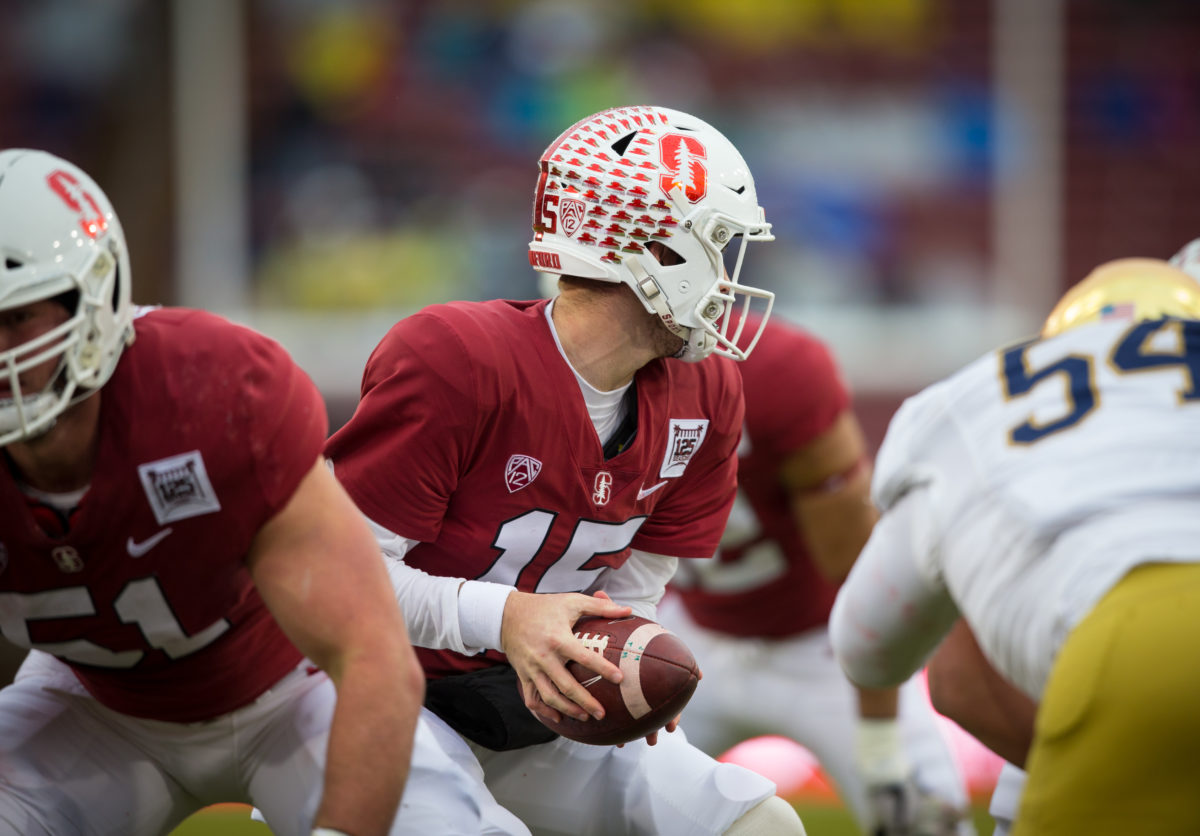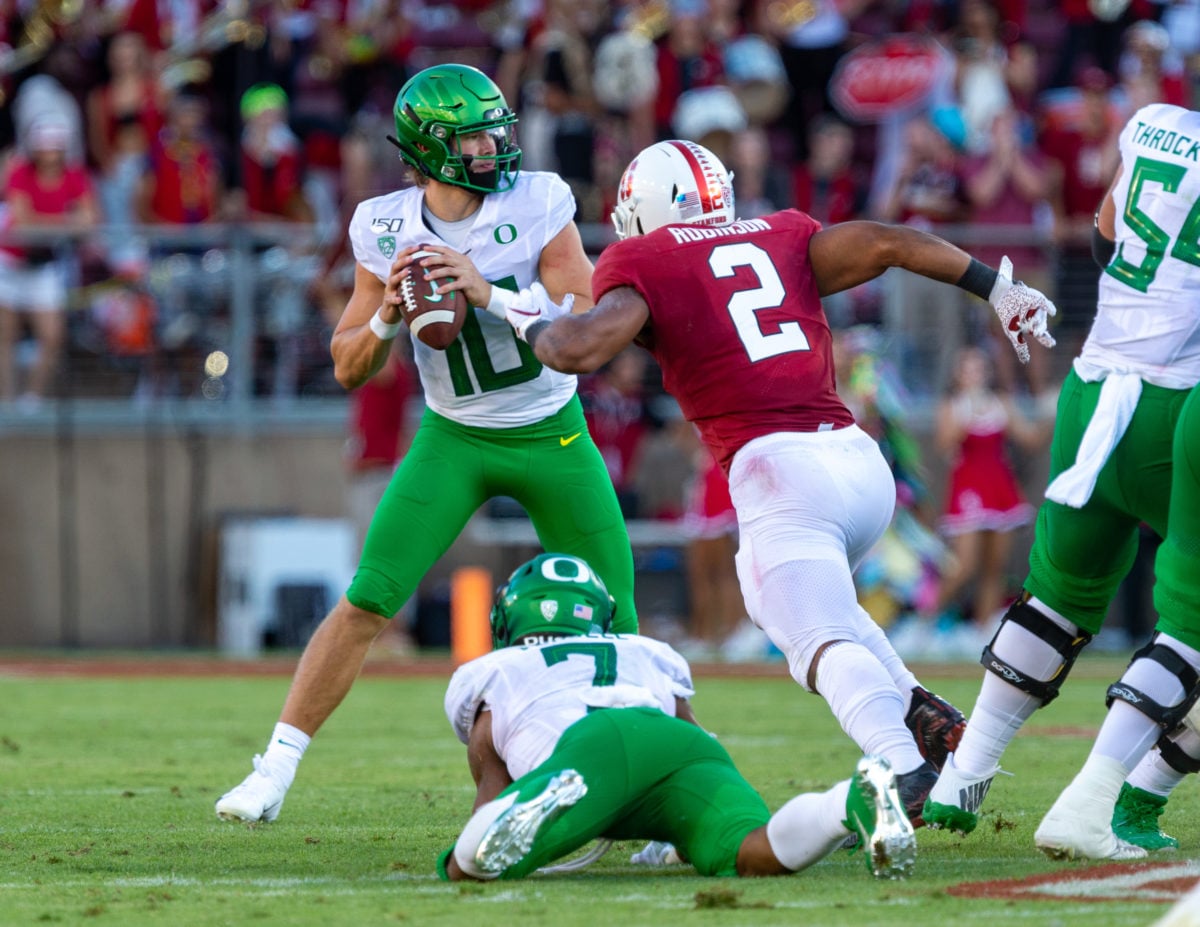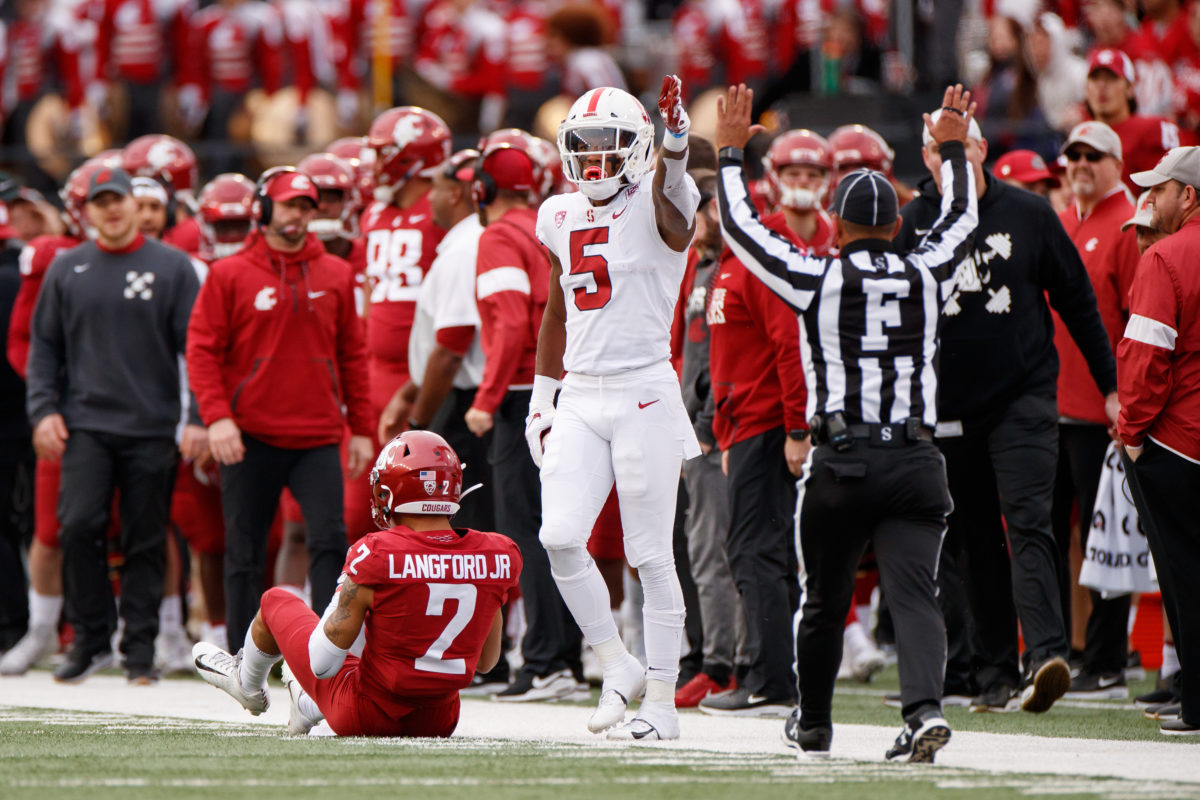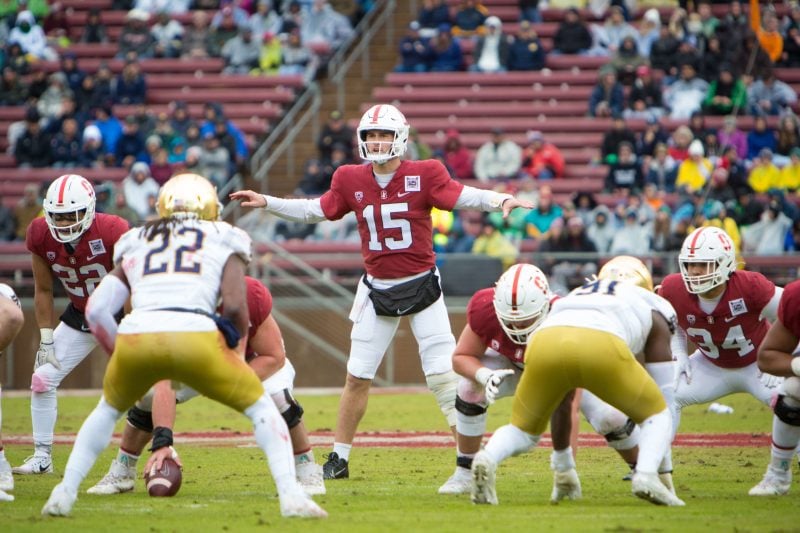This won’t be a normal fall on the Farm, but Stanford football is trying its best.
The Cardinal will return to action in about a week, as the Nov. 7 opener at Oregon grows closer. The differences between a normal season and this pandemic-altered 2020 iteration are too many to count, but it’s the similarities that are most important. We will see Stanford football this fall. That seemed impossible a couple months ago when the Pac-12 punted its season to spring. Thankfully, that ruling was overturned on video replay, and the Pac-12 will join most of FBS football in throwing together a 2020 football season.
The product on the field is almost irrelevant this season. It is far more important that Stanford is on the field at all and that everyone in and around the program stays safe and healthy throughout this process. But King’s Keys is here to discuss the most important benchmarks for Stanford and what Nerd Nation can reasonably expect from the Cardinal this season.
Stanford entered the long COVID-19 season with the sour, unfamiliar taste of a losing season in its mouth. Last season’s 4-8 mark was the program’s worst since 2007. Entering David Shaw’s 10th season as head coach, the program faces a proverbial crossroads. Was 2019 a blip on the radar of consistency and conference contention? Or will Stanford be relegated to Pac-12 mediocrity in the 2020s?
Stanford has the potential for a significant bounceback in this seven-game Pac-12 regular season. Here are three keys for the Cardinal to climb back towards the top of the Conference of Champions.
1) Davis Mills must be a top-three Pac-12 quarterback.
Senior quarterback Davis Mills made six starts in 2019. He averaged 308 yards per game in those starts, highlighted by a school-record 504 yards against Washington State. He totaled 11 touchdowns to five interceptions on the season and completed over 65% of his passes. Mills was the top-ranked quarterback in the 2017 recruiting class featuring Tua Tagovailoa and Jake Fromm. Couple his stats in limited opportunities with his obvious talent, and it becomes clear why Davis Mills is the top reason for optimism amongst Stanford fans coming into this season.
The Pac-12 is not exactly loaded with quarterback talent. Justin Herbert, Tyler Huntley and Anthony Gordon, the top three signal-callers in the conference last season, are all gone. USC’s Kedon Slovis and ASU’s Jayden Daniels are the frontrunners to assume the position of top Pac-12 QB in 2020 — but Mills should be in that conversation. He must be among the top quarterbacks in the conference for Stanford to have any chance at a Pac-12 title.

Unfortunately, Mills’ production last season did not translate into wins. The Cardinal went 2-4 in his six starts, even losing 49-22 in Mills’ historic game at Wazzu. Mills has to be even better and get more help from his defense in 2020. But Stanford will face a number of inexperienced QBs with significantly less talent than Mills this season, and Mills could prove to be the difference in those games. Five of Stanford’s six scheduled opponents will have new starting quarterbacks in 2020. Perhaps the best measuring stick for Mills will be his counterpart at Cal, Chase Garbers. If Mills outplays his rival across the Bay throughout the season, then Stanford should contend for a Pac-12 North title.
2) Stanford must find defensive stars.
Senior cornerback Paulson Adebo, arguably Stanford’s best defensive player over the past two seasons, opted out of this season to pursue his NFL career. Stanford also lost its top tackler (Andrew Pryts) and pass-rusher (Casey Toohill) from last season, along with one of its most impactful defensive linemen (Jovan Swann). The Cardinal face a dangerous amount of defensive turnover coming into 2020. The success of this season’s defense depends on decent players ascending to dominant players.
Stanford finished 87th nationally in total defense a year ago, including 117th in passing yards allowed per game. Defensive coordinator Lance Anderson’s bunch must improve this season despite the loss of multiple key contributors from last season. Yet there is reason to believe that Stanford could get better at every level of the defense in 2020.
The Cardinal have promising talent at every defensive position group. Junior defensive end Thomas Booker received All-Pac-12 honorable mention honors in 2019. He could be a force on the line this season, with the potential to be Stanford’s best defensive lineman since Harrison Phillips in 2017.

Fifth year inside linebacker Curtis Robinson is Stanford’s top returning tackler. The former five-star recruit also received All-Pac-12 honorable mention recognition last season, and perhaps more notably, he won Stanford’s Jack Huston Award for “aggressiveness, exceptional performance and unheralded efforts.” Those qualities will be sorely needed in the middle of Stanford’s defense this season. Robinson has the talent to be a sideline-to-sideline linebacker and the experience to be the “quarterback of the defense.”
In the secondary, Adebo’s absence leaves a gaping hole, but there is plenty of young talent to fill it. Sophomore cornerback Kyu Blu Kelly showed significant promise in his nine starts last season. Safeties, junior Kendall Williamson and sophomore Jonathan McGill, also stepped into bigger-than-expected roles last season. Add fifth year safety Malik Antoine to the mix, and it appears that Stanford’s depth issues at defensive back last season will provide significant benefit this season.
But can any of these potential defensive stars turn into actual defensive stars? To field a defense that gives Stanford a chance at a bounceback season, the Cardinal must find impact players on that side of the ball immediately.
3) Stanford needs a 2010s mentality with a 2020s strategy.
Stanford lived at the top of the Pac-12 for the first half of the 2010s thanks to its “Intellectual Brutality.” The Cardinal offensive line, or “Tunnel Workers’ Union,” as they call themselves, perennially ranked among the best in the country. Stanford’s defense was perhaps equally scary and dominant. The Cardinal had skill position talent, including Heisman finalists like Andrew Luck and Christian McCaffrey, but it was the program’s overall ethos of toughness that pushed Stanford to 66 wins over a six-year period from 2010-15.

Though “Intellectual Brutality” may still appear as a slogan on Stanford’s social media accounts, it hasn’t shown up on the field for years now. Stanford’s offensive line and defense have devolved into liabilities over the past few seasons. The only things pushing the Cardinal to nine wins in 2017 and 2018 were the outrageous speed of Bryce Love at running back and the prolific connection between quarterback KJ Costello and wide receiver JJ Arecega-Whiteside. In other words, Stanford relied on its skill-position talent to succeed.
Stanford’s top positions groups in 2020 are arguably quarterback and wide receiver. Mills should be one of the top quarterbacks in the Pac-12, and he has a deep wide receiver group to throw to. Juniors Simi Fehoko and Michael Wilson combined for 1,238 yards and 11 touchdowns last season, and they could equal that this season in half the games. Senior Connor Wedington provides an all-purpose flair at the position, and freshman John Humphreys has the makings of the next great Stanford jump-ball threat. In modern college football, elite quarterback and wide receiver play is often the most important factor for success (look at LSU’s National Championship-winning 2019 season). Stanford has the pieces to field one of the best passing attacks on the West Coast.
But can Stanford retain critical elements of “Intellectual Brutality,” including a dominant offensive line and shutdown defense, while still modernizing the offense into a passing juggernaut? Will David Shaw prove willing to open up the offense and give up his beloved conservative style?
Stanford can’t be just a run-heavy, defense-reliant brute — that style is incompatible with modern college football, and the Cardinal don’t have the offensive line or defensive talent to back it up. But it also can’t be just a pass-happy, fast-paced offense, either — then Stanford would be no better than Washington State.
The Cardinal must combine the mentality of the Intellectual Brutality era with the reality of modern college football and the strengths of their current roster. If Stanford can find that balance, it could shock the country on Nov. 7 in Autzen.
A previous version of this article named Anthony Gordon incorrectly. The Daily regrets this error.
Contact King Jemison at kingj ‘at’ stanford.edu.
